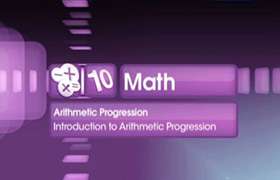CBSE Class 10 Answered
the four angles of a quadrilateral form an a.p.if the sum of the first three angles is twice the fourth angle,then find all the angles.
Asked by manishk.138 | 19 Mar, 2017, 03:36: PM
Let the angles be ∠A=a, ∠B=a+d, ∠C=a+2d, ∠D=a+3d
∠A+∠B+∠C+∠D=360°[angle sum property of quadrilateral]
a+a+d+a+2d+a+3d=360°
4a+6d=360 ...(i)
∠A+∠B+∠C+∠D=360°[angle sum property of quadrilateral]
a+a+d+a+2d+a+3d=360°
4a+6d=360 ...(i)
Given that the sum of the first three angles is twice the fourth angle.
∠A+∠B+∠C=2∠D
a+a+d+a+2d=2(a+3d)
3a+3d=2a+6d
a=3d ...(ii)
a+a+d+a+2d=2(a+3d)
3a+3d=2a+6d
a=3d ...(ii)
So, from (i) and (ii), we have
4(3d)+6d=360
12d+6d=360
18d=360
d=20
So, a=3d=3(20)=60
∠A=a=60°
∠B=a+d=60+20=80°
∠C=a+2d=60+2(20)=100°
∠D=a+3d=60+3(20)=120°
Answered by Rebecca Fernandes | 19 Mar, 2017, 03:57: PM
Application Videos
Concept Videos
CBSE 10 - Maths
Asked by shaikhyakub9946 | 30 Nov, 2023, 11:50: AM
CBSE 10 - Maths
Asked by samiranroychowdhury942 | 19 Jul, 2022, 08:37: AM
CBSE 10 - Maths
Asked by madhushreemahesh1986 | 10 Feb, 2022, 05:19: PM
CBSE 10 - Maths
Asked by mohammeduzaib786 | 27 May, 2021, 04:00: PM
CBSE 10 - Maths
Asked by poojakanchan | 10 Mar, 2021, 11:38: AM
CBSE 10 - Maths
Asked by chshandi2005 | 21 Dec, 2020, 11:31: AM
CBSE 10 - Maths
Asked by ruparupasri77 | 22 Sep, 2020, 12:44: PM






